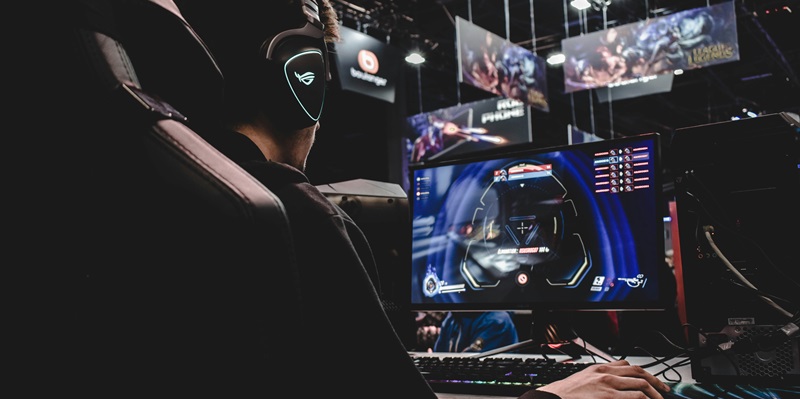As blockchain gaming flourishes alongside a rejuvenating cryptocurrency market, the sector’s dynamism is opening up new avenues for creative expression and financial investment in digital gaming. Despite the initial boom in user numbers, the area grapples with a key issue: maintaining player engagement over time. Achieving consistent user involvement is an elusive goal that industry leaders are striving to nail down. For blockchain gaming to successfully plant its roots and thrive, it must effectively juggle the excitement of rapid growth with addressing the problem of keeping players invested in the long haul. A delicate balance is thus required to ensure steadiness in this rapidly changing field, as it’s crucial for the enduring success of blockchain gaming ventures.
Surging Popularity of Blockchain Games
In line with the cryptocurrency resurgence, blockchain games have marked their territory with remarkable token market growth, amassing an impressive valuation of $18.5 billion. This has evidently been influenced by the substantial price spikes in flagship cryptocurrencies, with Bitcoin notably hitting a zenith unseen since the final quarter of 2021. This buoyant environment has been propitious for the blockchain gaming market, with significant boosts in user interest and token valuation.
However, a deep dive into February’s data discloses a curious predicament. While a remarkable 28.9% rise in daily active users for blockchain games denotes a heightened interest, this does not translate into an increased number of transactions. This disparity between participation and conversion points to a crux issue: attracting users might be manageable, but ensuring their long-term engagement has proven to be far trickier, painting a complex portrait of the blockchain gaming landscape.
The Challenge of User Retention
Captivating though the numbers may be, blockchain games see players come and go as swiftly as trends in this fast-paced digital era. Keeping these users from merely passing through is complex, with games boasting more than a thousand active users witnessing a downtrend. This starkly highlights the core challenge facing the industry: not just to charm, but to captivate—a quest to turn transitory interaction into enduring loyalty.
Amid a jigsaw puzzle of around 2,880 active games, industry pillars like Ronin, BNB Chain, and Polygon still emerge as leaders, though not without their struggles. The fragmented market only exacerbates the user retention challenge, necessitating more than just tech-savvy gimmicks or one-hit wonders. In the end, it’s about nurturing a gaming ecosystem where players not only arrive, but decide to make it their virtual home.
Partnership and Investment Fuel Growth
No industry thrives in isolation, and for blockchain gaming, the vitae include strategic partnerships and investments that have been nothing short of essential. Platforms like Oasys have leveraged alliances with significant gaming entities, propelling them to significance within the blockchain gaming world. Such relationships are fundamental, not just for the immediate acceleration they provide but for their potential in building the future tableau of the industry.
Even amid the challenges, investor interest in blockchain gaming retains its sheen. The month of February alone witnessed an infusion of $83.6 million across multiple funding rounds, a testament to sustained belief in the industry’s prospects. The nature of the investments, primarily below the $10 million mark, suggests a strategic and somewhat cautious approach but unmistakably indicates investor faith in the potential of this digital trendsetter.
Prioritizing Security in a Vulnerable Landscape
In the high-risk realm of blockchain gaming, security is not just a requirement; it’s a cornerstone for progress. The incident with PlayDapp’s significant token theft underscores the industry’s security gaps, highlighting the need for robust cyber defense mechanisms. With rapid innovation come elevated risks, making tight security a critical asset for these platforms.
Strong security measures are the bedrock of trust and credibility in blockchain gaming. They are essential to retain investor faith and a loyal gaming community. Despite the sector’s fast-paced evolution, prioritizing security is more than just cautionary. It acts as a strategic shield, ensuring the industry’s growth and stability. Cybersecurity isn’t merely about prevention; it’s a key investment in the future of blockchain gaming.
Looking Toward a Resilient Future
The blockchain gaming sector is weathering challenges thanks to strong strategic partnerships, consistent investment interest, and continuous innovation. These factors forge a strong foundation, enabling the industry to navigate difficulties. However, the crux of success in this industry hinges on creating engaging, enduring gaming experiences that captivate players beyond initial curiosity, ensuring a loyal gaming community.
For true success, the industry must offer captivating experiences to sustain player interest long-term, fueling the potential for substantial growth and longevity. By prioritizing sustained player engagement, blockchain gaming holds promise to revolutionize the landscape of digital gaming. With the right developments that capture and maintain gamer interest, the industry’s horizon is limitless, showing that blockchain gaming is more than a fleeting trend – it is the future of gaming in the digital era.

